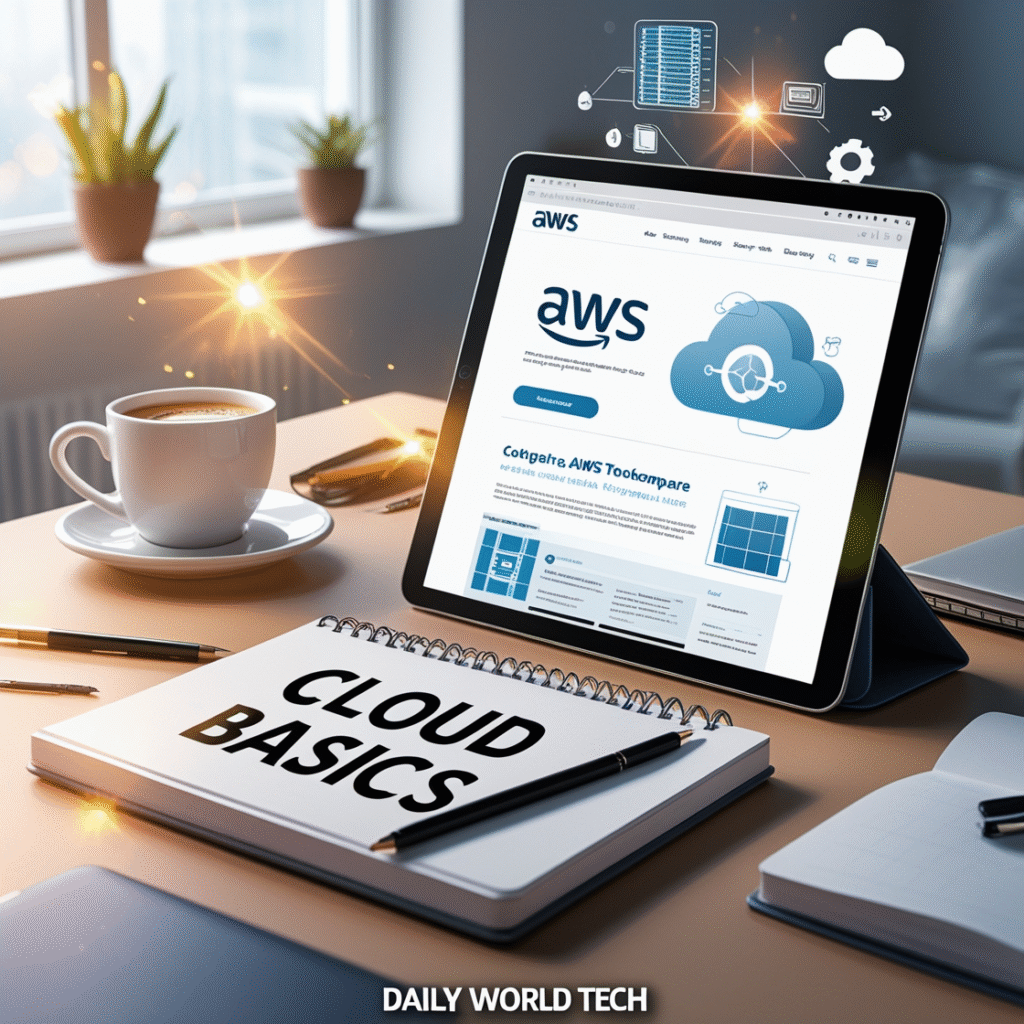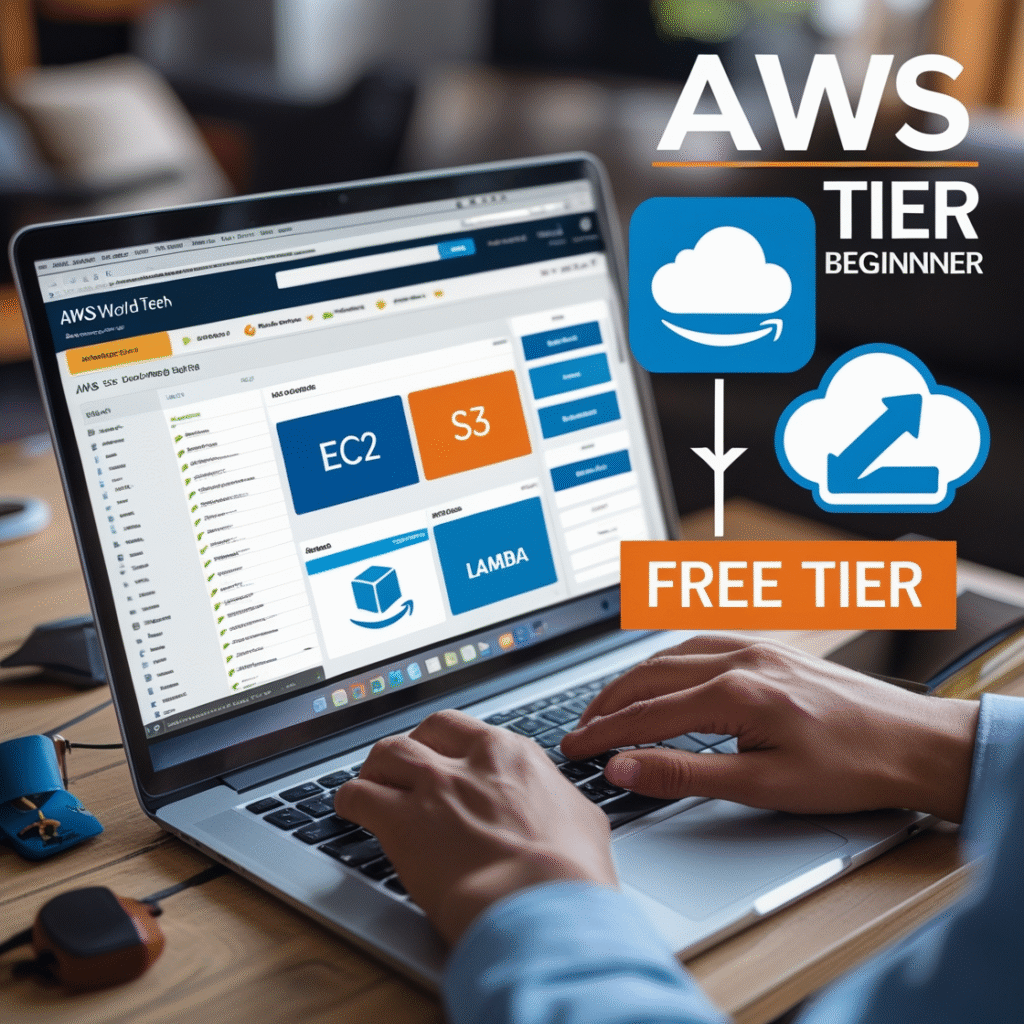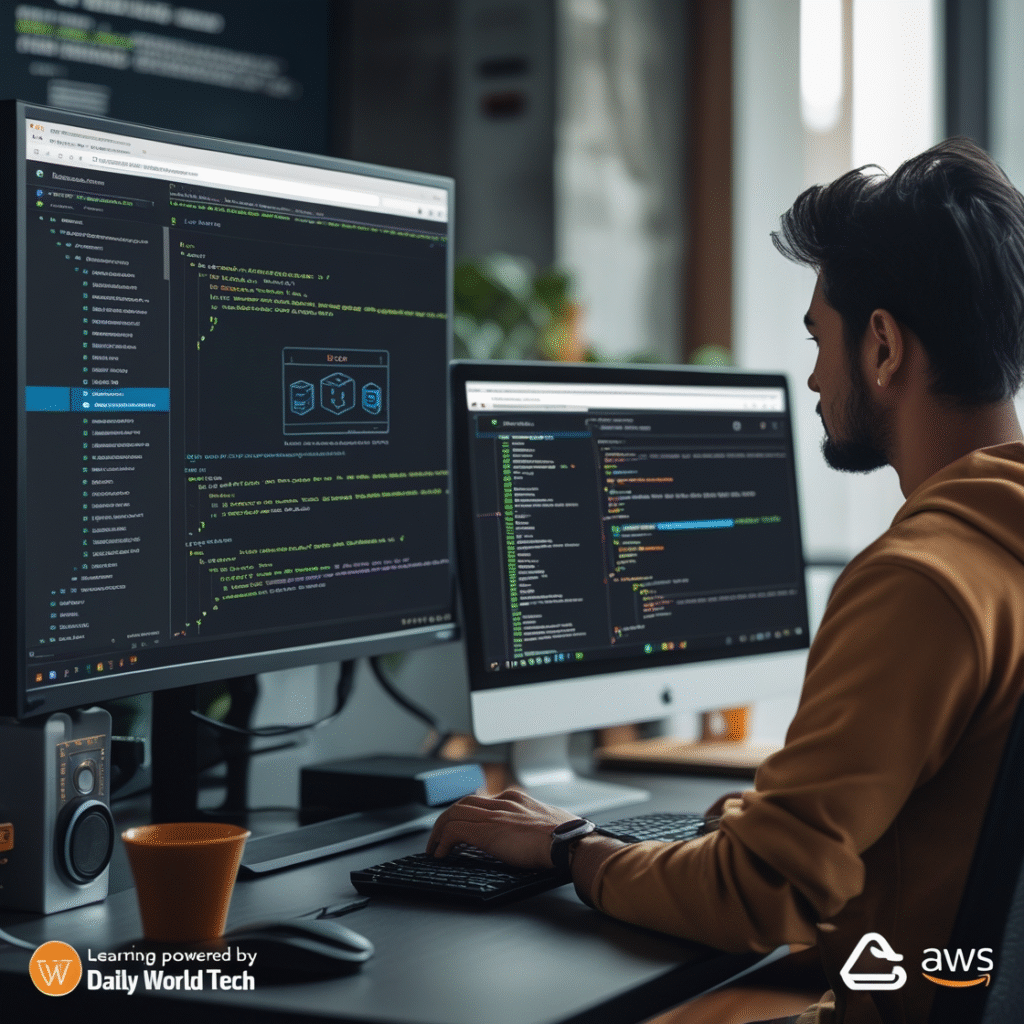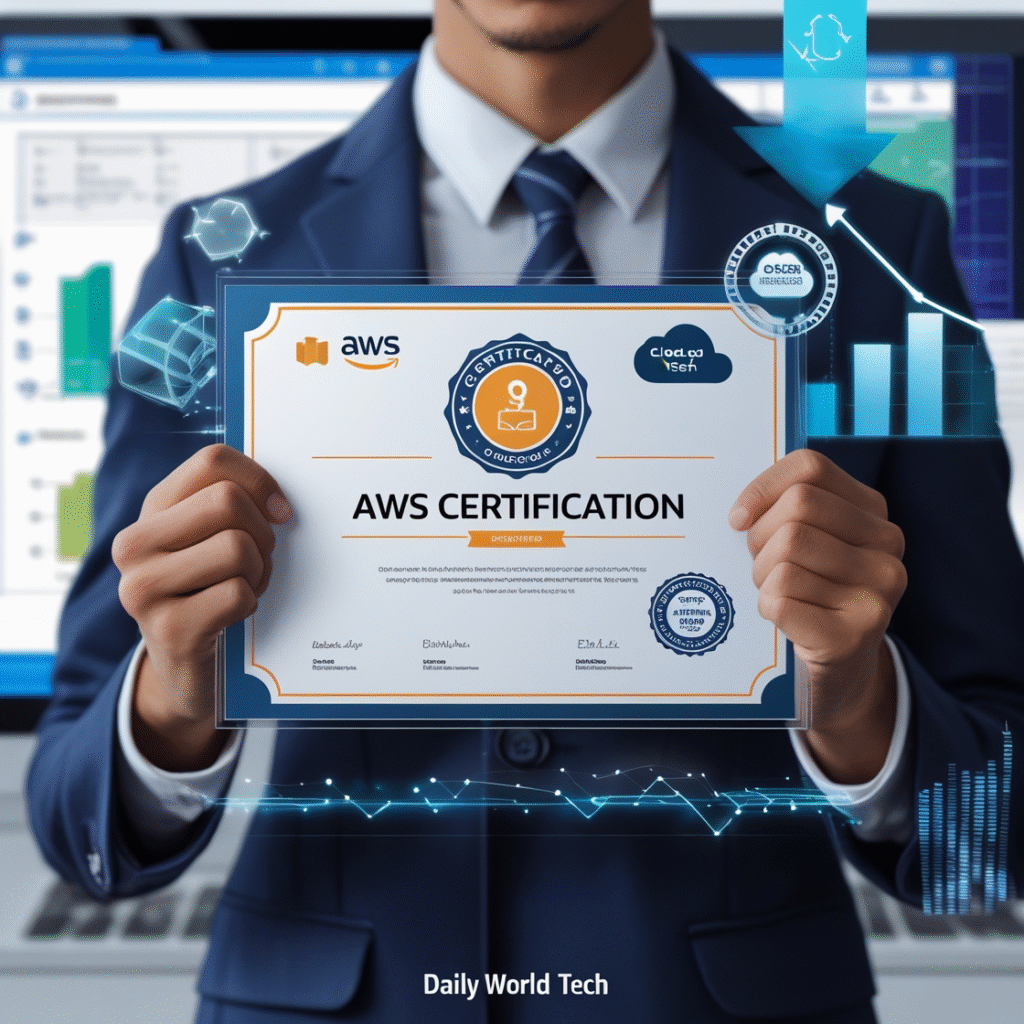In the modern digital world, cloud computing changes the ways of how businesses, developers, and individuals treat their data and infrastructure. Amazon Web Services (AWS) is the most commonly used and popular cloud platform among the most popular ones out there. Regardless of whether you need to change careers, choose AWS to get an effective start in the field of technology, whether you are a student or a freelancer, learning to work with AWS in a laboratory environment is an effective measure on the way to a career. It is a step-by-step instruction that will help you become familiar with all the necessary steps to begin your adventure on AWS even as an absolute newbie.

What is AWS?
Amazon Web Services (Amazon or AWS) is a cloud platform offered by Amazon that hosts more than 200 on-demand services such as computing power, database storage, content delivery, networking, security, and machine learning. It allows companies to work more effectively and be easily scalable, without having to uphold and sustain physical infrastructures.
Some of the popular AWS services:
- Virtual servers (Amazon EC2)
- Amazon object storage (S3)
- Amazon cloud computing (AWS Lambda)
- Amazon RDS relating to managed relational databases
AWS powers the cloud infrastructure of such top companies as Netflix, LinkedIn, Samsung, and NASA.
Why Should You Study AWS?
Learning AWS is quite a good idea, particularly in 2025, as there are a number of reasons:
- Good Salary: The demand of the Job in AWS in the technological sector is very high.
- Good Salaries: Professionals with AWS-certification receive above-average pay.
- Freelance Projects: AWS-type work is available on a variety of freelance sites.
- Free Practice Options: AWS has free learning in a form of a profile.
- Highly Scalable Career: As a cloud expert, you can work in the Cloud Engineer, Solutions Architect, and DevOps Engineer positions.
You can have a drastic advantage with AWS skills whether you want to work, do some freelance work, or even develop a technology item on your own.
Learn AWS Prerequisites
There is no need to get an IT degree to learn AWS. Nevertheless, rudimentary understanding of the following will be of assistance:
- The overall computer and internet knowledge
- Ability to work with some operating systems (Linux or Windows)
- Knowledge with the fundamentals of networking
- Optional: An introduction to programming (Python or JavaScript)
Even if one is a complete beginner, he can learn AWS with time and appropriate motivation and practice.

Step 1: Sign up an AWS Free Tier Account
In order to start practical learning, one should create an AWS account:
- Visit https://aws.amazon.com
- Press the Create an AWS Account button and type in your email and password
- Select the type of the account (Personal or Business)
- Put in payment details (should have credit/debit card)
- Select the Basic Support Plan (Free)
- Sign in to the AWS Management Console
What is AWS Free Tier?
The services provided by AWS that you can get free of charge include EC2, S3, and Lambda, but the limit is 12 months of work with them without exceeding the limits. It is ideal with learners that wish to train without coughing up funds.
Step 2: Get to Know AWS Global Infrastructure
It is better to know how AWS is structured across the world before initiating services.
- Regions: Physical geographical locations such as
us-east-1,eu-west-1, orap-south-1in which data centers of AWS are present. - Availability Zones (AZs): Separated data centers in every region to realize redundancy and high availability.
- Edge Locations: These are used in delivering the content (through CloudFront).
The selection of suitable region influences cost, speed, and compliance.
Step 3: Know More About AWS Management Console
AWS Management Console is an internet interface through which you can access and manage all AWS services. Once you have logged in, you will find a search box and a list of categorized services such as:
- Compute (e.g. EC2, Lambda)
- Storage (S3, EBS, etc.)
- Networking (e.g. VPC, CloudFront)
- Security (e.g. IAM)
Take time to go around the console. Look for the services and browse through tutorials and scout about the dashboard.

Step 4: Gain Core AWS Services
AWS has hundreds of services, but as a first-time user, you are supposed to begin with basics.
1. Elastic Compute Cloud (Amazon EC2)
EC2 enables you to operate virtual servers on the cloud. You are able to install software, web site hosting or run applications.
Try this:
- Creating an EC2 instance in free-tier (t2.micro)
- Select the Amazon Linux or Ubuntu
- Connect to the instance using SSH
- Install Apache or NGINX and maintain a tiny web page
2. Amazon S3 (Simple Storage Service)
S3 is object-based storage which is utilized on images, documents, and backups, etc.
Try this:
- Make a bucket (such as a folder)
- Post file and make it public
- Get a direct link to the file
- See whether you can turn on versioning and lifecycle rules
3. Amazon Web Services (IAM)
IAM makes it possible to have control over the people using your AWS resources.
Try this:
- Assign privileges and limited rights to a new user
- Install Multi-Factor Authentication (MFA)
- Get acquainted with the roles and policies
4. AWS Lambda
The serverless computing service of AWS is called Lambda. It executes code serving as an evented system, such as S3 uploads or API calls.
Try this:
- Write an easy Python or Node.js Lambda function
- Trigger it manually or based on the S3 upload
- Perform data manipulation or send back a message
5. Amazon Relational Database Service (Amazon RDS)
RDS enables simple database setups and control within MySQL or PostgreSQL.
Try this:
- Start MySQL RDS (free-tier eligible)
- Connect with MySQL Workbench
- Make a table and fill it with the data
Step 5: Lectures and Tutorials About AWS Pricing and Billing
AWS is a pay-as-you-go service, so the subject of billing is crucial to know.
What is AWS Free Tier?
- 750 hours/month EC2 t2.micro
- 5GB of S3 storage
- 1 million Lambda calls/month
Track the usage via the Billing Dashboard. Use alerts in CloudWatch to avoid random charges.
To estimate price of various services, use the AWS Pricing Calculator as well.
Step 6: Develop Hands-On Projects
There is only one ideal way to learn AWS and that is to practice. These are simple project ideas that can be attempted by beginners:
Project 1: Static Web Server in S3
- A S3 bucket should be created
- Load HTML, CSS, and JavaScript files
- Allow serving of static websites
- Publicize it and reach your site through URL
Project 2: Update to the EC2 WordPress Blog
- Open an Ubuntu EC2 instance
- Install MySQL, Apache, and PHP
- Install WordPress and set an environment of security
Project 3: Establish a Serverless Image Resizer
- Post files on S3
- Use a Lambda event to resize images
- Save the thumbnail images to a different bucket
These are real-life cloud projects, and they make you more confident.
Step 7: Get to Know AWS CLI and SDKs
AWS offers Software Development Kits (SDKs) and Command Line Interface (CLI) to be used in automating and scripting.
Install AWS CLI:
Consult the guide: AWS CLI installation
Then, configure it:
bashCopyEditaws configure
Enter:
- AWS Access Key ID
- AWS Secret Access Key
- Default region
- Output format
Useful AWS CLI Commands:
aws s3 ls– List bucketsaws s3 cp file.txt s3://yourbucket/– Upload fileaws ec2 describe-instances– EC2 instance listing
Manual tasks can also be automated with SDKs like Boto3 (Python), AWS SDK for JavaScript, or Java.

Step 8: Find Out About AWS Certifications
Certification of your knowledge of AWS makes you stand out in the job market.
Best Certifications for New Practitioners:
- AWS Certified Cloud Practitioner
- No experience required
- Covers AWS basics, billing, security, and cloud concepts
- AWS Certified Solutions Architect – Associate
- Designed for technical roles
- Focuses on designing cloud architectures
Study Resources:
- AWS Training & Certification Portal
- FreeCodeCamp, ACloud Guru, and Tutorials Dojo
- Whitepapers and practice exams by AWS
Certifications also assist you to keep on track and organized even when you are not looking out on a job.
Step 9: Be a Part of the AWS Community
It is always good to be able to relate with other learners. It makes learning better and easier.
- Reddit: r/aws
- Discord Groups: A large number of vibrant AWS learning communities
- LinkedIn Groups: Use them to keep up with the AWS thought leaders
- AWS Events: Go to free webinars and AWS re:Invent
Ask questions, share your projects, and connect with like-minded people.
Step 10: Create Your AWS Portfolio
After doing some projects and perhaps a certification, it is time to demonstrate your skills.
Tips:
- Publish project code on GitHub
- Write blog posts about your AWS learning
- Share screenshots or walkthroughs on LinkedIn
- Mention specific AWS services and tools on your resume
- Apply to internships, junior-level cloud roles, or freelance projects
A well-documented portfolio will show you know how to apply AWS in the real working world and stand a higher probability of being offered an opportunity involving cloud.











